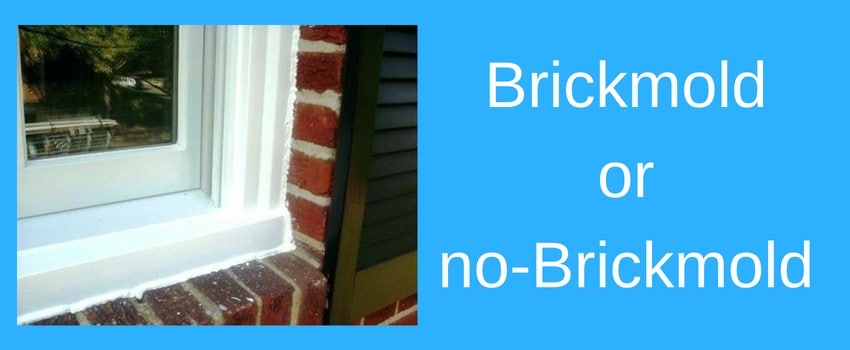Getting a window repaired can be a daunting task. You might say that calling in the professionals would get the job done. Yes, that’s true, but what will you do when you need to choose between brickmold or no brickmold options around windows or house doors?

This is a real dilemma for house owners and once you choose one of these, you cannot undo your decision after the door or window has been installed. To clear the confusion, let’s get a clear understanding of what brickmould actually is.
What is Brickmold (or Brickmould)?
Brickmold is the molding material around the actual casing or framing in which a window or door is installed. In this trimming frame, the molding covers the gap between the window/door frame and the exterior part of the brick siding (or any other type of siding that you have on your home exterior).
You must have seen a thick frame attached to the window. That is exactly what Brickmold is. Brickmold helps to increase the life of a door or window because it provides a gap between the masonry of the wall and the window frame. It is also used for aesthetic purposes.
Traditionally, hardwood was used to make brickmoulds. These did not rot easily and kept the windows intact for years.
The introduction of PVC brickmolds has given a new dimension to windows. These have a longer life than hardwood or softwood and can also be installed quite easily.
Moreover, if you want the windows to last for decades, you can get flashing done on the mold so that it does not come in contact with the brick wall.
What is the purpose of brickmold on doors and windows?
Brickmolds are mainly used for the following reasons;
- One, they increase the life of the doors and windows. By getting the additional molding around the windows or doors, you are actually protecting the window and making it last longer.
- Another reason why brickmolds are important is that they enhance the beauty of windows and doors. Contrasting colors of the frame and the windows can look really cool.
- You can also get decorations done on the brickmold once it is installed. In fact, doors and windows with brickmolds often come in handy during the Christmas celebrations because of the added decorations.
Brickmold vs No Brickmold
Deciding between whether to choose between a brickmold and a no brickmold installation is entirely up to you.
Both have their own advantages and you get to decide which benefits would suit your house more, however most professionals recommend to use Brickmold especially around windows.
Here are a few points of differences between brickmolds and no brickmolds that will help you decide:
• Brickmold comes with added security for your doors and windows. Since this is a separate frame attached to the brick or siding wall, the window itself is safe from wearing down with time. Windows with no-brickmolds around them do not have that added security. It is just a normal window or door that is installed quicker than using brick mould.
• No-brickmold Windows have a sleek and stylish look however. With the added frame, brickmolds can seem to be bigger than normal. If you have a stylish window, you can get it installed in a no-brickmold system.
• Installation cost is more for brickmolds, but they can make your windows last more. That is not the case with no-brickmold windows. Yes, the installation cost is comparatively less, but the life is not as long as the other option.
While installing doors and windows, you need to make sure that they last for a long time. Repairing doors and windows can be quite costly. So, when you are getting it done, choose the right option so that they look stylish and withstand the harsh outdoor elements for years.
How to Install Brick Moulding Around a Door
Here is an article about installing brick molding around doors or windows.
Related Posts
- Comparison of Durock vs Fiberock vs Densshield for Tile Projects
- 11 Types of Interior Wall Panelling Materials for Homes (Wooden, PVC etc)
- Different Types of Residential Insulation for Walls
- 5 Amazing Ideas for Home Addition Projects
- Comparison of HardieBacker Cement Board vs Plywood For Tiling Projects
- Comparison of Shiplap vs “Tongue and Groove” vs Beadboard Wall Paneling
This needs far more pictures of each type of casing